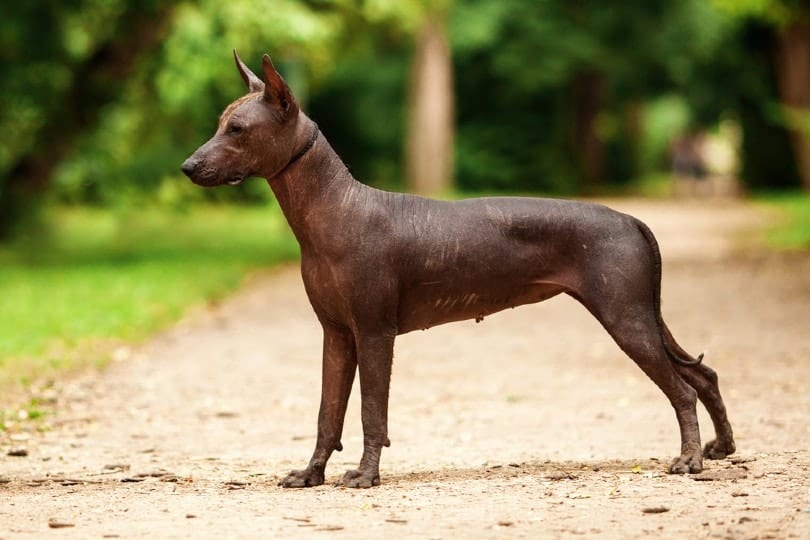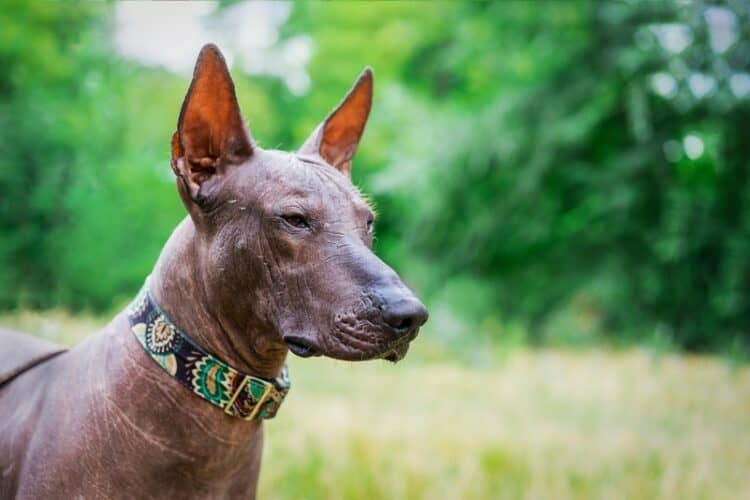The Xoloitzcuintli, also known as the Mexican Hairless or Xolo, is an ancient dog breed that’s been around for at least 3,000 years. Despite not having a lot of hair, these dogs aren’t completely hypoallergenic. They may be a bit more bearable for allergy sufferers, but there’s no guarantee that you won’t experience any allergic reactions around them.
So, before you decide to bring home a Xoloitzcuintli, make sure you know how to properly care for one to reduce the risk of experiencing an allergic reaction.
Causes of Dog Allergies
The main cause of dog allergies is dander, saliva, and urine. So, dog hair isn’t the main culprit for triggering allergic reactions. However, hair can help spread dander throughout the house.
Even if you have a hairless dog, like the Xolo, you can still get allergic reactions because you can always come in contact with dander, saliva, and urine. Therefore, you have a better shot at living with a dog by taking good care of its skin and coat rather than just choosing a hairless dog.
Tips for Allergy Sufferers Living with Xoloitzcuintles
Protect Their Skin
Since Xolos don’t have much hair, their skin requires special attention. They can’t have too many baths because their skin can dry easily. Any time you do give a Xolo a bath, make sure to use moisturizing and nourishing shampoo and conditioner. Using a moisturizer in between baths will help keep a Xolo’s skin healthy and prevent drying and flaking.
Since Xolos don’t have much hair, they get sunburned more easily than other dogs with thicker coats. They shouldn’t be outside for too long on particularly sunny days, and they should also wear sunscreen for dogs.
If you choose to clothe your Xolo during colder months, make sure to select clothes with soft and breathable fabric so that your Xolo’s skin doesn’t get itchy and irritated.

Feed An Appropriate Diet
Diet can also help keep a Xolo’s skin healthy. Dogs with food allergies can end up experiencing itchy and inflamed skin, which can cause Xolos to scratch and lick their skin. A limited-ingredient diet can help some dogs with food allergies.
If your dog just struggles with dry and itchy skin, you can also feed it a diet specifically made to support a healthy skin and coat. Fish oil supplements can also help nourish the skin. Just remember that if you’d like to significantly change your dog’s diet, consult with your veterinarian first.
Potty Train
Lastly, it’s imperative that a Xolo is completely potty trained if it’s going to live with an allergy sufferer. Since urine can trigger allergic reactions, it’s best for Xolos to learn to relieve themselves outside of the home. While pee pads can have deodorizers, they won’t completely eliminate the urine odor.
Also, if you have a Xolo that’s in the potty-training process, make sure to use cleaners with formulas that properly break down urine stains and eliminate odors. Enzymatic cleaners will be more effective than regular household cleaners in preventing allergic reactions.
Conclusion
There’s no such thing as a completely hypoallergenic dog. However, a Xolo may be a good dog for allergy sufferers. You just have to make sure that you’re on top of its grooming, diet and nutrition, and potty training.
Overall, creating a healthy lifestyle for a Xolo can have positive effects on its skin, which can prevent allergic reactions. So, with some work, a responsible and vigilant owner can make it possible for allergy sufferers to live with a Xolo.
Featured Image Credit: Shutterstock














